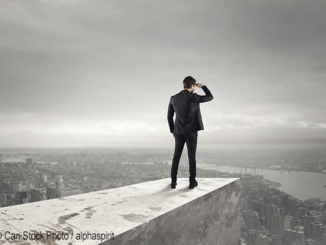
Training Coordinator, Sheet Metal Workers’ Training Centre (Local 280)
I spent my summers working at my family’s company in the office, in the shop, and cleaning the grounds, and eventually made my way onto the job sites. By time I was 15 or 16, I was a skilled roofer, mostly because I was just a kid working with my father and his three brothers. Each of them had different styles, techniques, and ideas, and most importantly, when I made mistakes, they would take the time to explain things to me. Sometimes I think that is what is missing in the industry now—the time for experienced workers to help the inexperienced learn how to do things.
I went to university with the idea that I would eventually take over the family business; however, after several years, I realized that route wasn’t for me. After travelling and pursuing a number of different directions, I came back to the family business and challenged my roofing ticket. By that time, my father owned the business on his own, so I did a sheet metal apprenticeship and became a full Red Seal in 2001. In 2002, my father sold the business so I went to work for Austin Sheet Metal, which is also a family-run business, so I felt some familiarity and comfort there. When I graduated, I was faced with some decisions. I knew I wanted to be more than a journey or a supervisor, but I didn’t want to own a business. I started exploring the organizing and education arms of Local 280. Through unionism, I learned what it meant to take care of people, and I enjoyed spreading the word of social responsibility. Over the years, I applied for three different instructor positions at SMWTC and was unsuccessful, but when the training coordinator position came up, I knew it was a really good fit for me.
We were in a leased facility, and I understood the limitations of that and have moved the school twice. I have lobbied for government support for the training program and for workers’ compensation for apprentices, which was granted not just for us but for all private institutions in British Columbia. We have four full-time instructors, four part-time instructors, and three office staff. Most importantly, the growth potential is there to increase capacity to respond to industry need.
I owe a lot to the trades. I love being able to build things. I love being able to tell stories about the places we have built or the people I have met throughout my career. There has been joy, anger, fear, and tears. Even my scars are stories.
To enter the sheet metal industry, you have to be willing to work hard, learn, and be a person who gets things done. The paycheque and benefits (extended health and dental) are great, but most importantly, the work opens a diverse range of opportunities. Once you are finished the apprenticeship, you are just getting started. The learning continues with supervisory skills, new products, and technology evolving every day. When I started there was no technology for layout, and now this generation is being trained with virtual reality. The mechanization and computerization of our trade is not going to stop. Astronauts and pilots don’t learn in spaceships and planes. They sit in a simulator for five years. That same career arc is occurring in our trade.
This trade is an incredible opportunity as long as you are willing to learn. As fast as you want to run in this race, there is track for you to run on. There is the opportunity to house, feed, and care for your family, to have great health benefits and to enjoy the satisfaction of building things. At the end of the day, a building goes up and the people at the ribbon cutting never actually built it. The building is a monument quietly recognizing your work.
I was brought up as a contractor and an owner, and I have been president of the union for nine years now. I have seen how both sides—labour and contractors—can stand apart and how detrimental that is. The partnership isn’t just important—it is everything. Not having it is like trying to make a meal without the ingredients. The battle isn’t between labour and contractors; it has to be both sides working together against policy or practices that don’t support our industry.
One of the greatest examples of that partnership is the Sheet Metal Industry Training Board. In it, there are no contractors and no union, just people who want to make the industry better. If you don’t have people with the willingness to push the envelope and make sure everyone is looked after, you have no industry. ■
This article was reprinted with permission from the February 2021 issue of Partners in Progress. Visit pinp.org to read more.



